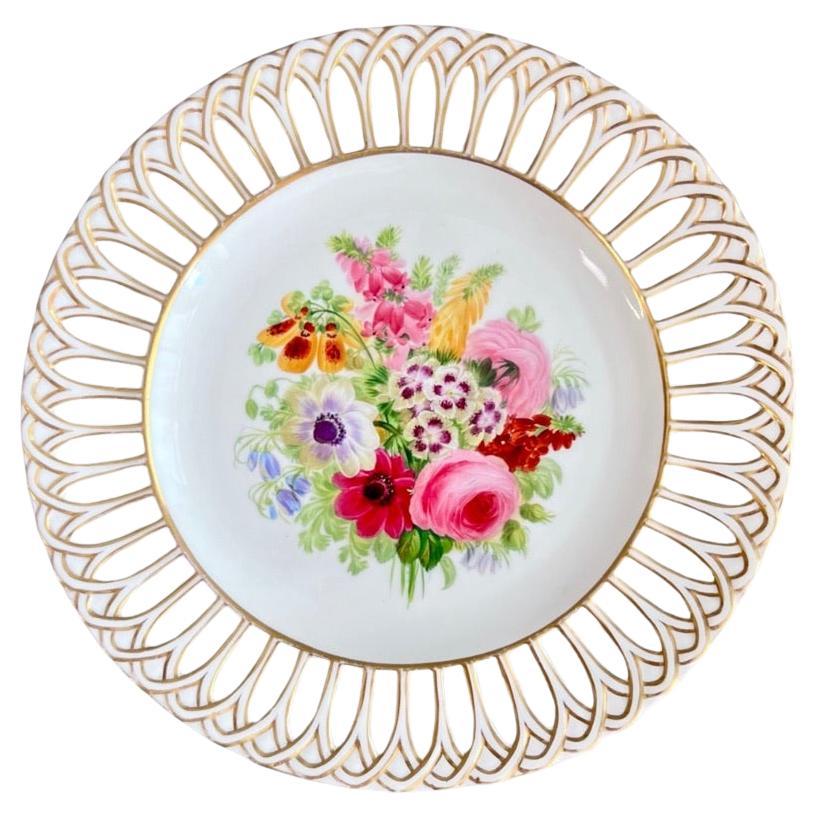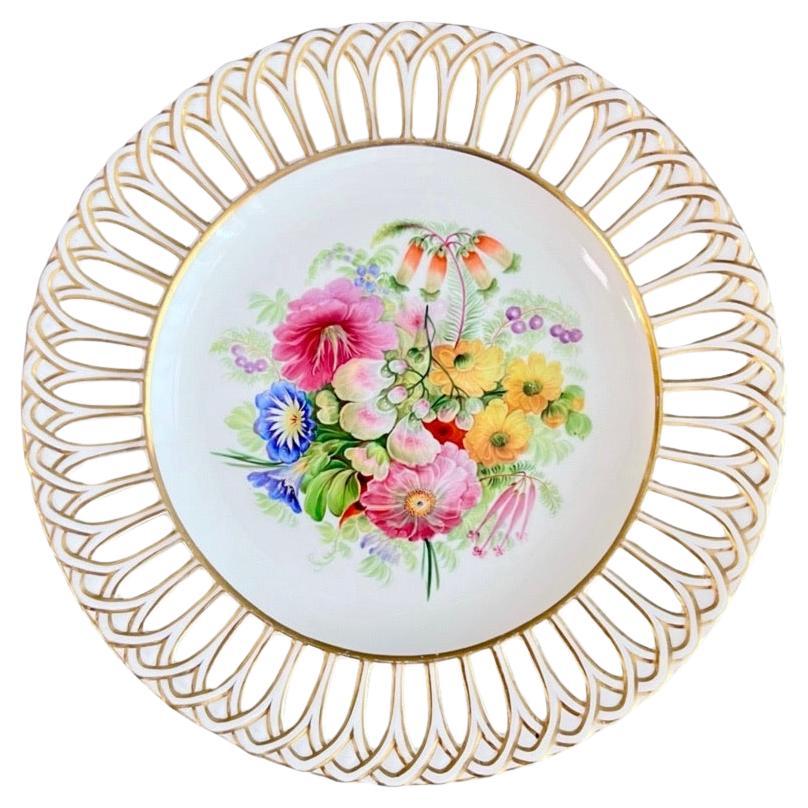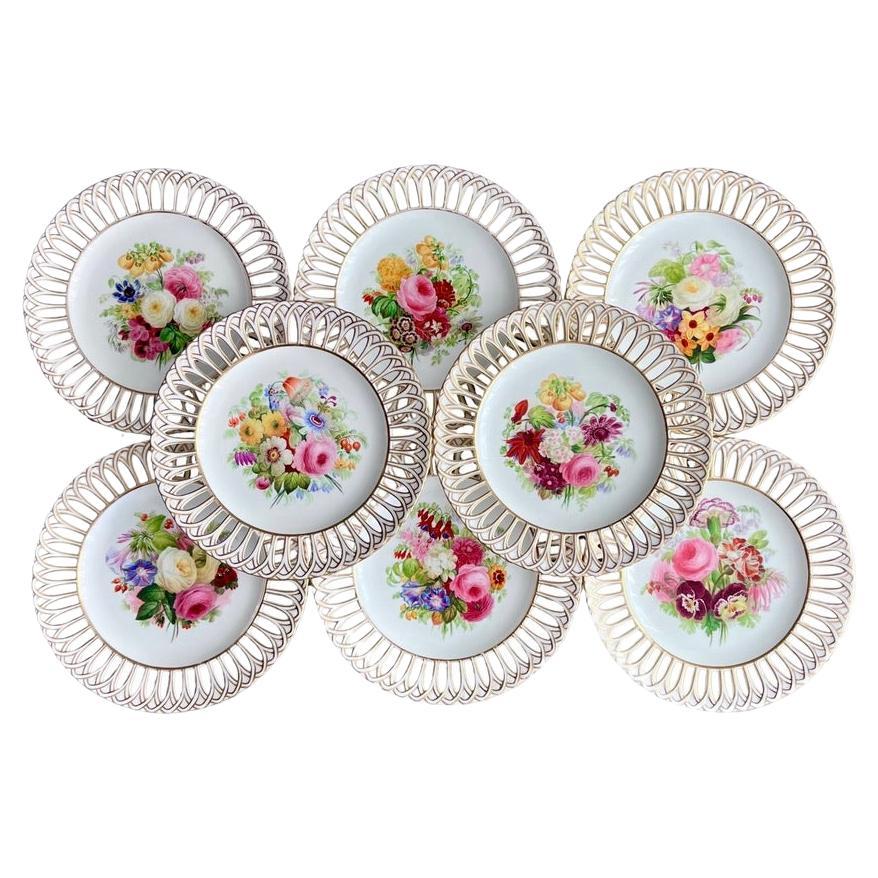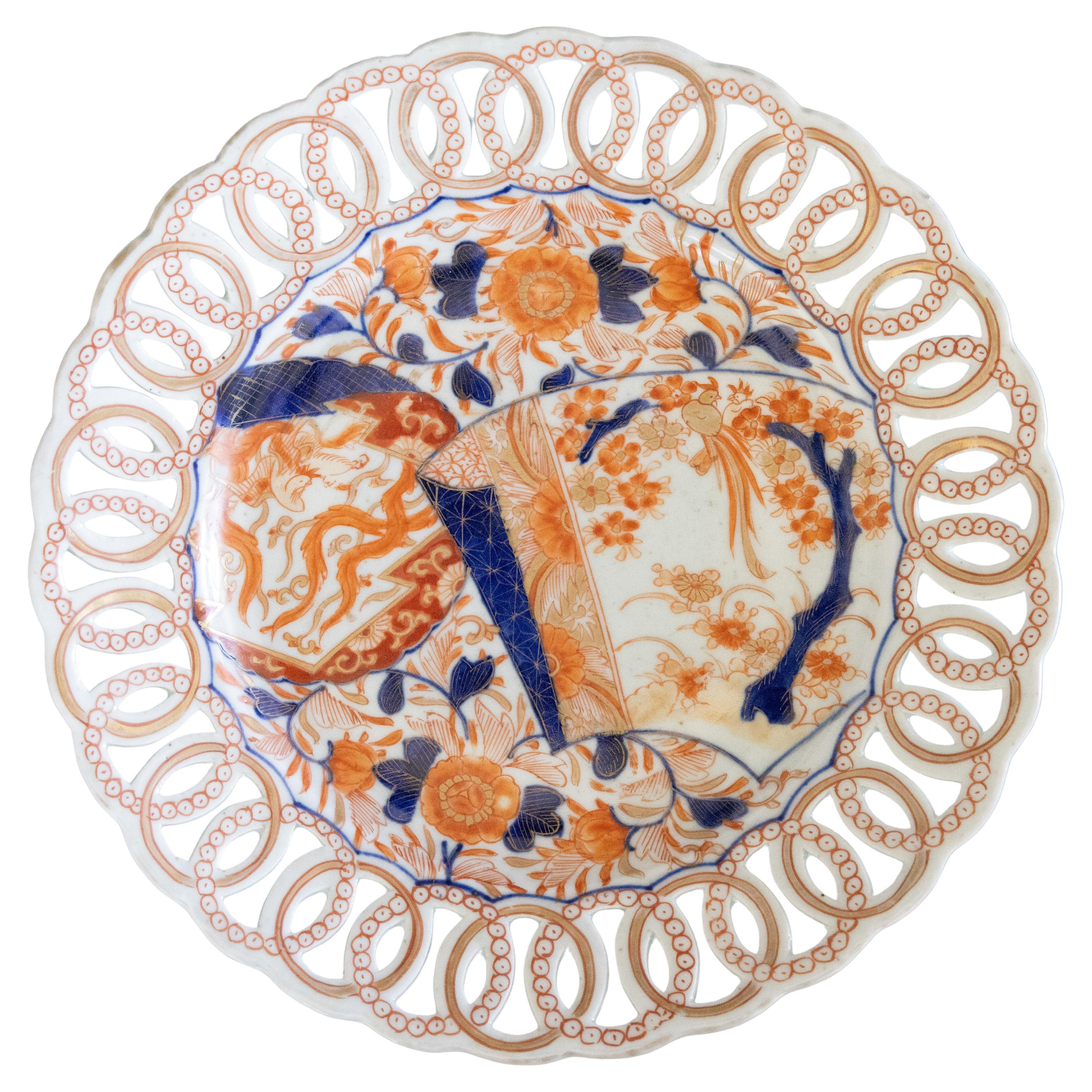Items Similar to 6 Austrian Hungarian Pink Scalloped Pierced Reticulated Lotus Flower Plates 8.5"
Want more images or videos?
Request additional images or videos from the seller
1 of 11
6 Austrian Hungarian Pink Scalloped Pierced Reticulated Lotus Flower Plates 8.5"
About the Item
Six antique Austrian / Hungarian pink stoneware plates featuring a scalloped pierced lotus flower design. Marked with Vienna beehive and F Y W.
Dimensions:
8.5" x 0.5" (Diameter x Height)
- Dimensions:Height: 0.5 in (1.27 cm)Width: 8.5 in (21.59 cm)Depth: 8.5 in (21.59 cm)
- Sold As:Set of 6
- Style:Late Victorian (Of the Period)
- Materials and Techniques:
- Period:
- Date of Manufacture:Late 19th Century
- Condition:Wear consistent with age and use. Good Overall - Some crazing; gentle wear.
- Seller Location:Dayton, OH
- Reference Number:
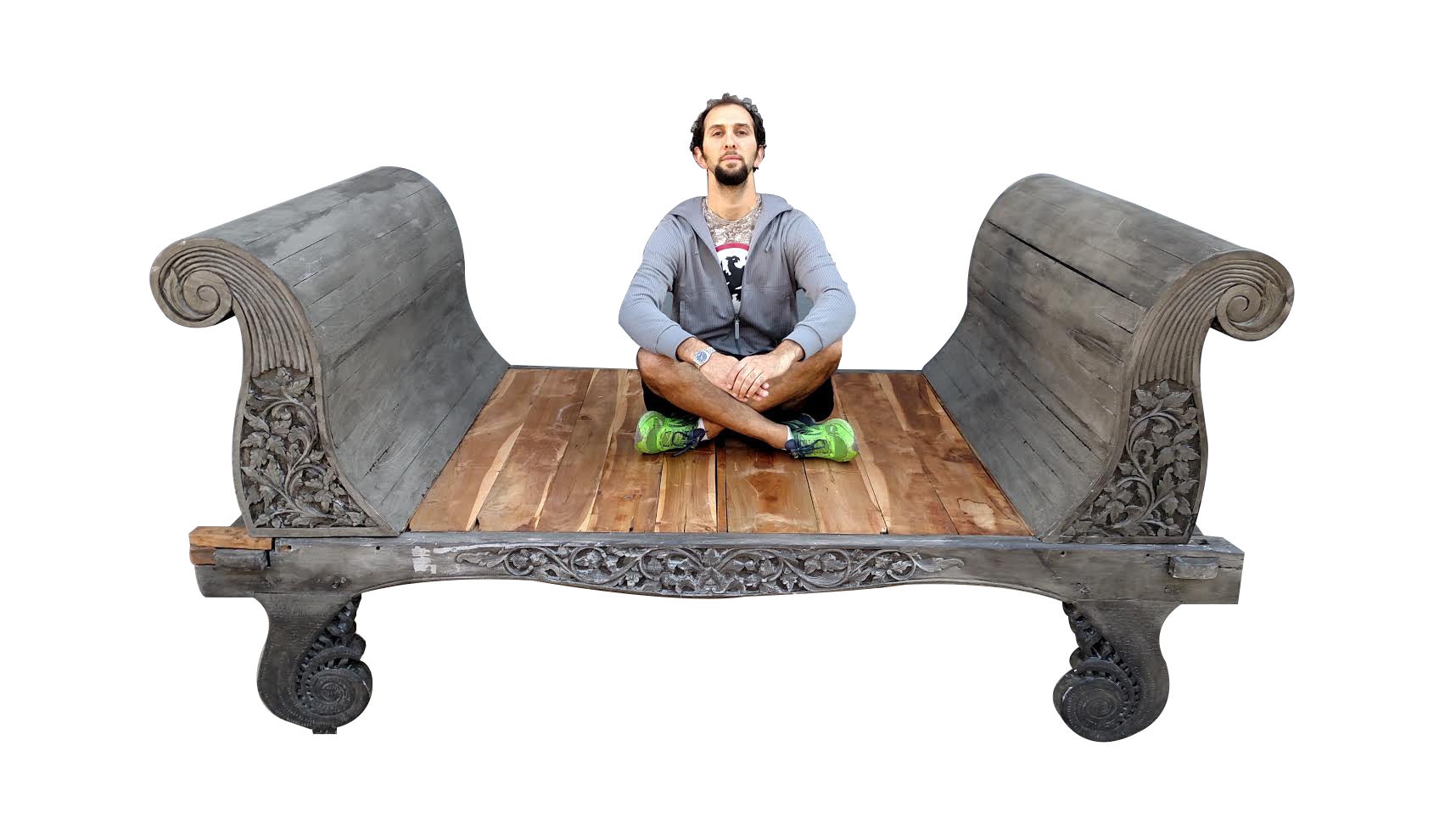
About the Seller
4.9
Platinum Seller
These expertly vetted sellers are 1stDibs' most experienced sellers and are rated highest by our customers.
Established in 2010
1stDibs seller since 2020
1,141 sales on 1stDibs
Typical response time: <1 hour
- ShippingRetrieving quote...Ships From: Dayton, OH
- Return PolicyA return for this item may be initiated within 2 days of delivery.
More From This SellerView All
- 2 Antique Franziska Hirsch Dresden Porcelain Polychrome Scalloped Floral PlatesLocated in Dayton, OHPair of scalloped edge plates by Hirsch. Features a magnificent polychrome floral design. Blank produced by MZ Austria (mark covered on base). Incised number 933. "Franziska Hirsch...Category
Early 20th Century Dinner Plates
MaterialsPorcelain
- 2 Antique 1862 Minton International Exhibition Jeweled Turquoise PlatesBy MintonLocated in Dayton, OHPair of two Minton plates, circa 1862. Provenance : Jerome Schottenstein Estate, Columbus Ohio. Jerome was was an American entrepreneur and philanthropist, co-founder of Schottenstein Stores Corp. The Schottenstein family were Lithuanian immigrants who began an extensive business empire in the late 19th Century. Schottenstein Stores owns stakes in DSW and American Signature Furniture; American Eagle Outfitters, retail liquidator SB360 Capital Partners, over 50 shopping centers, and 5 factories producing its shoes and furniture. It also holds an ownership interest in American Eagle Outfitters, Wehmeyer in Germany, Cold Stone Creamery and The Mazel Company. These superb quality Minton plates are from a dessert service shown at the International Exhibition of 1862 in London. The plates testify to the enduring influence of 18th Century Sèvres on the tastes of Victorian high society. The designs are far from being mere copies, however; while there are recognisable Sèvres elements, they are arranged in entirely new and delightful ways. On the rim are four imitation cameo heads of classical deities en grisaille on a red-brown ground, within oval reserves wreathed in laurel. The profiles are individually painted; compare, for instance, the winged helmeted heads of Hermes/Mercury and you will spot subtle differences. The cameo devices, used here for the first time by Minton, derive from the celebrated Sèvres dinner...Category
Antique 1860s Victorian Porcelain
MaterialsPorcelain
- Antique Art Nouveau KPM Berlin Porcelain Gilded Windmill Charger Plate 14"By Königliche Porzellan-Manufaktur (KPM)Located in Dayton, OHRare antique KPM Berlin porcelain dinner plate, platter or charger featuring central landscape scene that of a windmill, figures, and sailboats surrounded by Art Nouveau design of fl...Category
Early 20th Century Art Nouveau Dinner Plates
MaterialsPorcelain
- 2 Baker Knapp & Tubbs Italian Porcelain Hand Painted Ornithology Bird Plates SetBy Baker Knapp & TubbsLocated in Dayton, OHPair of Vintage Baker Knapp & Tubbs Italian porcelain plates on stands. Each is Hand Painted in green over ivory. Made by Este porcelain for Baker. "...Category
Late 20th Century Dinner Plates
MaterialsPorcelain
- 2 Antique 18th Century Chinese Export Qianlong Famille Dinner Charger PlatesLocated in Dayton, OHPair of antique late 18th century to early 19th century Chinese export Qing (Qianlong Period, circa 1780) porcelain dinner plates with hand painted famille and lattice motifs. Measur...Category
Antique Late 18th Century Chinese Export Dinner Plates
MaterialsPorcelain
- 18th Century Antique Chinese Export Armorial Blue & White Dinner Plates 11"Located in Dayton, OHPair of 18th century Chinese Export porcelain plates featuring slightly scalloped edges, hand painted blue and white borders and armorial crest / coat of arms at the center. Includes...Category
Antique 18th Century Chinese Export Dinner Plates
MaterialsPorcelain
You May Also Like
- Copeland Plate, Reticulated, Sublime Flowers by Greatbatch, 1848 (3)By CopelandLocated in London, GBThis is a beautiful plate made by Copeland in 1848. It is decorated with a sublimely painted flower arrangement by the artist Greatbatch. We have two sets of 8 of these plates available, as well as a few more separate ones; please see separate listings. The Copeland factory was the third iteration of the famous Spode factory, after the "Copeland & Garrett" period which transitioned into the "Copeland" period in about 1833. The Spode/Copeland factory was one of the most prominent potteries right from the start of English porcelain production in the late 1700s to the demise of the industry in the 1960s and ultimate closure in the early 21st Century. In fact it was the founder Josiah Spode who was responsible for the recipe for bone china that made English china production so successful in the two centuries to come. Throughout all the changes, their items have always remained of exceptionally high quality and many of the designs have become iconic. This plate was potted in fine white bone china, the rim meticulously reticulated in the "Gothic" shape. Reticulation was very time consuming and difficult, and just this detail would have made this plate expensive. The sublimely painted flower arrangement painted in the centre were done by Greatbatch, one of the well-known floral artists working for Copeland. Greatbatch was active between 1845 and 1860, and worked together with his brother R. Greatbatch, who was a talented gilder. They exhibited at the Great Exhibition of 1851. This plate would have belonged to a sublimely expensive dessert service. It is stamped with the small blue Copeland mark with interlocking C's, and painted in red with the pattern number 7913, dating it at the year 1848. Documentation: A plate of this service is shown on page 80 of Steven Smith's "Spode & Copeland: Over Two Hundred Years of Fine China and...Category
Antique 1840s English Victorian Dinner Plates
MaterialsPorcelain
- Copeland dessert Plate, Reticulated, Sublime Flowers by Greatbatch, 1848 (1)By CopelandLocated in London, GBThis is a beautiful plate made by Copeland in 1848. It is decorated with a sublimely painted flower arrangement by the artist Greatbatch. We have two sets of 8 of these plates available, as well as a few more separate ones; please see separate listings. The Copeland factory was the third iteration of the famous Spode factory, after the "Copeland & Garrett" period which transitioned into the "Copeland" period in about 1833. The Spode/Copeland factory was one of the most prominent potteries right from the start of English porcelain production in the late 1700s to the demise of the industry in the 1960s and ultimate closure in the early 21st Century. In fact it was the founder Josiah Spode who was responsible for the recipe for bone china that made English china production so successful in the two centuries to come. Throughout all the changes, their items have always remained of exceptionally high quality and many of the designs have become iconic. This plate was potted in fine white bone china, the rim meticulously reticulated in the "Gothic" shape. Reticulation was very time consuming and difficult, and just this detail would have made this plate expensive. The sublimely painted flower arrangement painted in the centre were done by Greatbatch, one of the well-known floral artists working for Copeland. Greatbatch was active between 1845 and 1860, and worked together with his brother R. Greatbatch, who was a talented gilder. They exhibited at the Great Exhibition of 1851. This plate would have belonged to a sublimely expensive dessert service. It is stamped with the small blue Copeland mark with interlocking C's, and painted in red with the pattern number 7913, dating it at the year 1848. Documentation: A plate of this service is shown on page 80 of Steven Smith's "Spode & Copeland: Over Two Hundred Years of Fine China and...Category
Antique 1840s English Victorian Dinner Plates
MaterialsPorcelain
- Copeland Plate, Reticulated with Sublime Flowers by Greatbatch, 1848 (2)By CopelandLocated in London, GBThis is a beautiful plate made by Copeland in 1848. It is decorated with a sublimely painted flower arrangement by the artist Greatbatch. We have two sets of 8 of these plates available, as well as a few more separate ones; please see separate listings. The Copeland factory was the third iteration of the famous Spode factory, after the "Copeland & Garrett" period which transitioned into the "Copeland" period in about 1833. The Spode/Copeland factory was one of the most prominent potteries right from the start of English porcelain production in the late 1700s to the demise of the industry in the 1960s and ultimate closure in the early 21st Century. In fact it was the founder Josiah Spode who was responsible for the recipe for bone china that made English china production so successful in the two centuries to come. Throughout all the changes, their items have always remained of exceptionally high quality and many of the designs have become iconic. This plate was potted in fine white bone china, the rim meticulously reticulated in the "Gothic" shape. Reticulation was very time consuming and difficult, and just this detail would have made this plate expensive. The sublimely painted flower arrangement painted in the centre were done by Greatbatch, one of the well-known floral artists working for Copeland. Greatbatch was active between 1845 and 1860, and worked together with his brother R. Greatbatch, who was a talented gilder. They exhibited at the Great Exhibition of 1851. This plate would have belonged to a sublimely expensive dessert service. It is stamped with the small blue Copeland mark with interlocking C's, and painted in red with the pattern number 7913, dating it at the year 1848. Documentation: A plate of this service is shown on page 80 of Steven Smith's "Spode & Copeland: Over Two Hundred Years of Fine China and...Category
Antique 1840s English Victorian Dinner Plates
MaterialsPorcelain
- Chinese Export Famille Rose Medallion Reticulated Pierced Circle Rim PlateBy CANTON FAMILLE ROSELocated in Philadelphia, PAA Chinese Export or Canton porcelain plate in the Rose Medallion style, circa 1820. Dating to the later period of the Qing Dynasty, the plate...Category
Antique Early 19th Century Chinese Chinese Export Porcelain
MaterialsPorcelain
- Copeland Set of 8 plates, Reticulated, Sublime Flowers by Greatbatch, 1848By CopelandLocated in London, GBThis is a stunning set of 8 reticulated plates made by Copeland in 1848. Each plate is decorated with a unique sublimely painted flower arrangement by the artist Greatbatch. We have a second set of 8 of these plates available, as well as a few separate ones; please see separate listings. The Copeland factory was the third iteration of the famous Spode factory, after the "Copeland & Garrett" period which transitioned into the "Copeland" period in about 1833. The Spode/Copeland factory was one of the most prominent potteries right from the start of English porcelain production in the late 1700s to the demise of the industry in the 1960s and ultimate closure in the early 21st Century. In fact it was the founder Josiah Spode who was responsible for the recipe for bone china that made English china production so successful in the two centuries to come. Throughout all the changes, their items have always remained of exceptionally high quality and many of the designs have become iconic. These plates were potted in fine white bone china, the rims meticulously reticulated in the "Gothic" shape. Reticulation was very time consuming and difficult, and just this detail would have made these plates expensive. The sublimely painted flower arrangements in the centre were done by Greatbatch, one of the well-known floral artists working for Copeland. Greatbatch was active between 1845 and 1860, and worked together with his brother R. Greatbatch, who was a talented gilder. They exhibited at the Great Exhibition of 1851. These plates would have belonged to a sublimely expensive dessert service. They are all stamped with the small blue Copeland mark with interlocking C's, and painted in red with the pattern number 7913, dating it at the year 1848. Documentation: A plate of this service is shown on page 80 of Steven Smith's "Spode & Copeland: Over Two Hundred Years of Fine China and Porcelain...Category
Antique 1840s English Victorian Dinner Plates
MaterialsPorcelain
- Large 19th Century Imari Plate With Reticulated Open Pierced RimBy Imari PorcelainLocated in Pearland, TXA large 10" antique 19th century Imari plate with an open pierced rim and hand painted floral design in the traditional Imari colors. This fin...Category
Antique 19th Century Japanese Dinner Plates
MaterialsPorcelain
Recently Viewed
View AllMore Ways To Browse
Scalloped Glass
Pierced Plates
Austria Hungary
Austrian Hungary
Hungary Plates
Pink Porcelain Plates
Reticulated Silver
Lotus Porcelain
Pink Glass Dinner Plates
Victorian Porcelain Plates
Antique Beehive
Beehive Antique
Reticulated Porcelain
Dinner Plates With Pink
Scalloped Dinner Plates
Antique Austria Porcelain
Reticulated Plate
Beehive Porcelain
